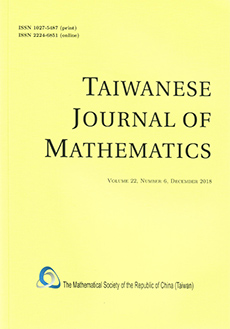Abstract
Given a Vilenkin group G, a scalar matrix $\Lambda = [\lambda_{ij}]_{i \in \mathbb{N}, j \in \mathbb{N}_0}$, a function $f \in L^1(G)$, and a point $x \in G$ we introduce, for each $\alpha \in \mathbb{R}$, the $(\Lambda,\alpha)$ − derivative $f$ at $x$ denoted by $f^{(\Lambda,\alpha)}(x)$. We also introduce the sets: $$ M_\alpha = M(G,\Lambda,\alpha,x) := \big\{ f \in L^1(G):\exists f^{(\Lambda,\alpha)}(x) \big\}, $$ $$ M = M(G,\Lambda,x) := \{f \in L^1(G):\exists f^\Lambda(x)\}; $$ where $f^\Lambda(x)$ derivative in [8], which is a generalization of Onneweer’s derivative $f^{[1]}(x)$ in [6]. We proved:
(a) Five theorems which express essential characteristics of $(\Lambda,\alpha)$− derivative,
(b) $M = M_0$,
(c) $(\forall \alpha,\beta \in \mathbb{R}) \wedge (\alpha \lt \beta) \Rightarrow (M_\alpha \subseteq M_\beta) \wedge (M_\beta \setminus M_\alpha \not= \theta)$.
Statement b) states that the method $(\Lambda,\alpha)$ − differentiation, for $\alpha = 0$, is equal to $\Lambda$ − differentiation and statement c) says that $(\Lambda,\alpha)$− differentiation increases with increasing $\alpha \in \mathbb{R}$.
Citation
Medo Pepić. "DIFFERENTIATION ON VILENKIN GROUPS USING A MATRIX." Taiwanese J. Math. 15 (6) 2387 - 2402, 2011. https://doi.org/10.11650/twjm/1500406477
Information





